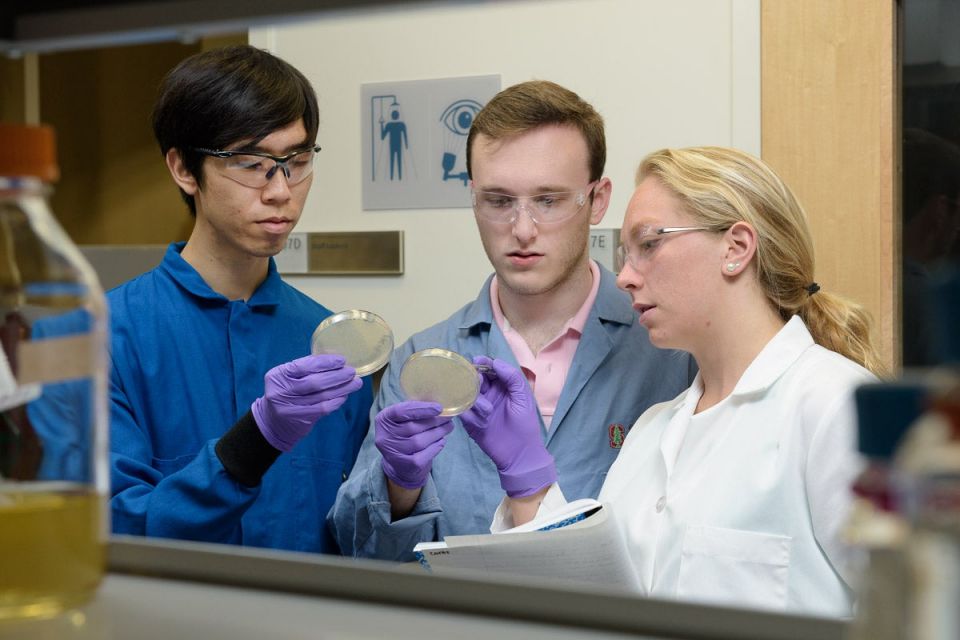A team of Stanford ChEM-H undergraduates has won the Lemelson-MIT Student Prize for their development of proteins that could combat multidrug-resistant bacteria, which the World Health Organization has described as one of the most serious public health threats the world faces today.

Christian Choe, left, Zach Rosenthal and Maria Filsinger Interrante, aka Team Lyseia, strategize tests of their new antibiotics. (Image credit: L.A. Cicero)
Maria Filsinger Interrante, now a student in the School of Medicine’s Medical Scientist Training Program, and seniors Christian Choe and Zach Rosenthal will share a $10,000 award that comes with the prize, which is presented to promising young inventors around the country.
Multidrug resistance is exactly as it sounds: Since the first use of penicillin in the 1940s, some disease-causing bacteria have evolved the ability to withstand multiple antibiotic drugs. The danger, however, lies not just in their sophisticated defenses against current antibiotics, but in their ability to evade any newly developed antibiotics of the future. Choe, Filsinger Interrante and Rosenthal thought what was needed was an entirely new class of antibiotic – one that bacteria can’t evolve defenses against.
Their idea was to engineer a bacteria-killing protein with a special feature: If bacteria evolved resistance to one of the protein’s attacks, it would make itself susceptible to others.
The trio, collectively called Team Lyseia, began as part of a biotech entrepreneurship student club spearheaded by ChEM-H director Chaitan Khosla and life-science industry veterans Zachary Sweeney, an alumnus, and Cameron Gray. During weekly 90-minute meetings, club members learned how to develop scientific ideas into proposals for biotech startups. After their pitch, Khosla gave them $10,000 and access to ChEM-H’s Macromolecular Structure Knowledge Center to develop their idea and run proof-of-concept tests. The team is now working on larger-scale studies and is looking into forming a company around the project.
“Team Lyseia has successfully connected the dots between breakthrough biology, protein engineering and unmet clinical need with a level of sophistication that is uncommon among undergraduates,” Khosla said. “I have not encountered a more entrepreneurial group of young aspiring scientist-engineer-clinicians.”
“Getting the prize makes me proud of all the hard work we’ve put in and really glad that we are successfully able to communicate the value of our invention,” said Filsinger Interrante. “Hopefully the prize will help bring more attention to this global threat and inspire other engineers to take it on as well.”
Media Contacts
Nathan Collins, Stanford News Service: (650) 725-9364, nac@stanford.edu